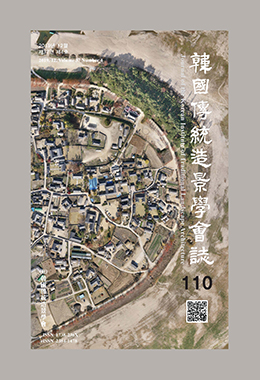본 연구는 전통정원 유적의 복원 사례를 살펴보고자, 한·중·일 궁궐정원유적을 대상으로 기단복원, 개별 정원요소 복원으로 구분하여 살펴보고, 이를 통해 각 보존기법별 고려되어야 할 특징들을 도출한 결과는 다음과 같다.
첫째, 기단복원이 이루어진 정원유적들을 살펴본 결과, 북해공원의 만불루 경구는 관련 문헌과 비교분석을 바탕으로 기단부와 주춧돌만을 복원하였다. 부여 관북리 유적은 발굴이 완료된 지역 중 연못과 수로, 대형건물 터에 남아있는 기단과 흙다짐 기초만을 복원하였다. 평성궁의 제2대극전은 건물지와 기단을 복원하고 주변에 제2태극전의 영역을 알 수 있도록 장대나 말뚝을 설치하였다.
둘째, 개별요소의 복원이 이루어진 경주 동궁과 월지는 초기 발굴조사를 통해 확인된 연못 정원유구와 사료들을 토대로 전통정원 유적을 선제적으로 복원하였다. 원명원의 황화진은 서양동판화와 관련 기록들을 토대로 복원하였으나 복원 이후 추가로 발견된 자료를 통해 현재의 모습과 다르게 복원한 점을 확인하였다. 평성궁 동원 정원은 기존 유구들을 복토하고 그 위에 건물들을 복원하였으며, 경석과 수로 등 대표적 정원 요소들을 보존처리하여 노출시키는 방법을 사용하였다.
셋째, 기단복원은 전통정원 유적의 현재 상태 또는 발굴조사를 통해 기단부가 확인된 경우로 입면 구성방식이나 규모 등이 확인된 기단부를 우선 복원하여 영역성을 확보하는 것이 중요하다. 일부복원은 전통정원 유적 내 일부 건물이나 시설물 등 개별 요소들에 대해 문헌 고증을 통한 복원이 가능한 대상들을 한정하여 복원하는 방법으로 면밀한 문헌 고증이 요구된다.
This study aims to analyze restoration techniques of traditional garden sites targeted Korean, Chinese, Japanese palace garden. Restoration was divided into the restore foundation and restore individual elements depending on the residual state of the actual garden features. And derived characteristics that should be considered by conservation techniques. The results are as follows;
First, the Wanfo Pavilion Area in Beihai Park where the foundation and foundation stones were restored based on the relevant literature and comparative analysis. The Archaeological Site in Gwanbuk-ri, Buyeo restored only the remaining structures of the ponds, waterways and large buildings among the areas where the excavation was completed. The Second Daigokuden Garden in Heijokyo Palace restored building sites and foundation, and installed poles and piles so that the area of the Second Daigokuden Garden could be known.
Second, Donggung Palace and Wolji Pond, Gyeongju where the restoration of individual elements was made, preemptively restored the remains of traditional gardens based on pond garden estuaries and feedbacks that were confirmed through initial excavation. Huanghuazhen Area in Yuanmingyuan Garden was restored based on Western copper plate prints and related records, but further data found after the restoration confirmed that it was restored differently than it is now. East Palace Garden in Heijokyo Palace covered existing features with soil and restored buildings on them. Typical garden elements such as landscape stone and waterways were preserved and exposed.
Third, foundation restore is a case in which the base is identified through the current state of the traditional garden site, it is important to restore the foundation first and secure the territoriality when there is no restoration plan for the elevation structure or size of the garden relics. Restoration of individual garden elements requires careful examination of the literature by limiting the restoration of objects that can be restored through the examination of the literature for each element, such as some buildings or facilities in the traditional garden site.




